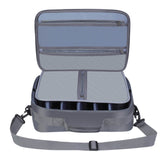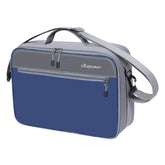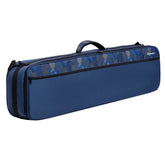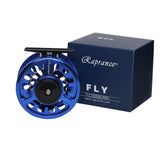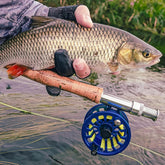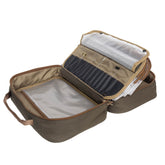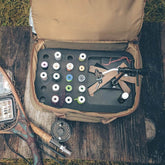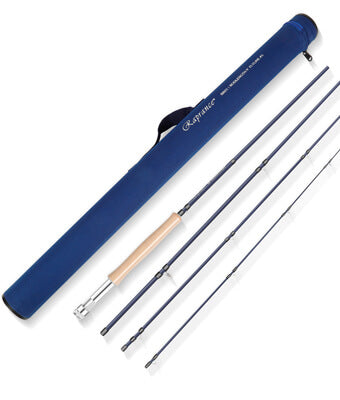Fly Line: Choosing the Best Leader for Trout and Saltwater Fly Fishing
When it comes to fly fishing, selecting the right gear is essential for a successful outing. I often find that the type of fly line I choose can significantly influence my catch rate. Understanding the nuances between floating and sinking leaders is vital for targeting trout effectively, and even more so in saltwater environments.

Choosing the best leader for trout fishing can make a marked difference in my fishing experience. A well-matched leader provides the right balance of strength and delicacy, ensuring that my flies present naturally in the water. This is equally important when I transition to saltwater fly fishing, where conditions demand a different approach to leader selection.
The debate between floating and sinking leaders is one I engage in regularly, as each serves a purpose depending on the fishing conditions and the species I'm targeting. By tailoring my choice of fly line and leader, I maximize my chances of a successful catch, whether I'm on a tranquil river or tackling the challenges of the saltwater flats.
Overview of Fly Lines and Leaders
In fly fishing, selecting the right fly line and leader is crucial for success. The type of fly line impacts how the fly behaves in the water, while the leader plays a vital role in presenting the fly effectively.
Differentiating Fly Lines: Floating Versus Sinking
When choosing a fly line, I often consider whether a floating or sinking line is most appropriate. Floating lines stay on the surface and are ideal for techniques like dry fly fishing. They allow for easier line management and provide a good visual indicator of strikes.
Conversely, sinking lines are designed to dive below the surface. They are useful for targeting fish at various depths, particularly in fast currents or when fishing for species that feed near the bottom. Sinking lines are categorized into types like intermediate (slow sinking) and fast sinking to match specific fishing conditions. I find that using the right line type can significantly enhance my chances of catching fish.
Understanding Leaders for Fly Fishing
The leader is a crucial component of my fly fishing gear, connecting the line to the fly. I usually opt for a tapered leader, which gradually decreases in diameter, allowing for a smoother transition of energy when casting. This design supports better presentation and control.
For trout fishing, I often choose leaders made from fluorocarbon, which is nearly invisible underwater and provides excellent sensitivity. The typical leader length can range from 7.5 to 12 feet, depending on the water conditions and fishing style. Adjusting the leader's strength and length can also help me adapt to different environments and fish behaviors, enhancing my overall effectiveness while angling.
Tactics for Trout Fishing
When targeting trout, selecting the right leader and employing effective fishing techniques is crucial. Each factor contributes significantly to the overall success of the fishing experience.
Selecting the Best Leader for Trout
Choosing the appropriate leader for trout fishing requires a balance of strength and visibility. My go-to option is a tapered leader that transitions from thick to thin, providing strength for casting and a delicate presentation for the fish.
I typically prefer a leader with a breaking strength between 4 to 6 pounds. For tippets, I opt for 4X to 6X, depending on the water conditions and the size of the trout. A simple double surgeon’s knot works well for connecting tippets to the leader, ensuring minimal visibility while maintaining strength.
Trout Fishing Techniques with Fly Lines
Fly casting is an essential skill when pursuing trout. My approach often includes a roll cast or a double haul to improve distance and accuracy. In shallow waters, I aim for a stealthy presentation by casting upstream and allowing the fly to drift downstream naturally.
Adjusting the weight of my line can also impact success. For instance, using a floating line is effective in calm waters, while a sinking line can be beneficial in deeper pools. I often vary my retrieves, experimenting with both steady and erratic motions to entice reluctant trout. Different types of flies, such as nymphs or streamers, can be effective depending on the day’s conditions.
Saltwater Fly Fishing Essentials
When preparing for saltwater fly fishing, selecting the right leaders and gear is crucial. Each component plays a vital role in targeting species like striped bass, redfish, and tarpon effectively.
Leaders for Saltwater Species
For saltwater fishing, leaders should be strong and abrasion-resistant. I typically use fluorocarbon leaders, which have low visibility and good sinking properties. A common setup includes a 20- to 30-pound test leader for species like redfish and striped bass.
I also recommend using tapered leaders. They help reduce knot visibility and provide a smooth turn-over for flies. For targeting bonefish, I prefer an 8 to 12-pound test leader. Tarpon require more substantial leaders, often around 50- to 80-pound test, to handle their aggressive nature.
Gear and Tackle for Saltwater Fly Fishing
Choosing the right gear is essential for success. I use a 9-weight or 10-weight fly rod for larger species like tarpon and bluefish. A high-quality fly reel with a strong drag system is crucial for managing powerful runs.
Backing is equally important; I typically spool at least 200 yards of braided backing. Key flies for saltwater species include clouser minnows and deceivers. Each pattern plays a role in specific conditions. I make sure to carry a variety of flies to adapt to changing environments like tides and weather patterns.

